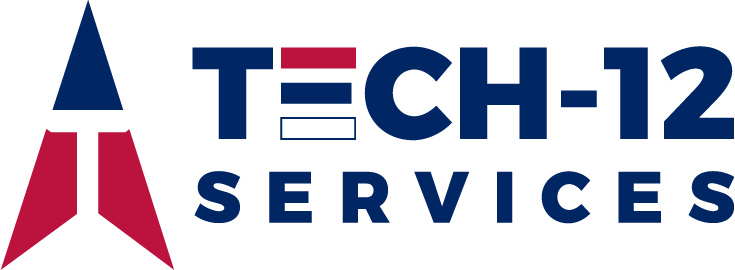In the intricate world of construction, safety is non-negotiable. To ensure that future work is conducted securely and without risks, a Facilities Maintenance Manual (Facilities Maintenance Manual) covering the required information from Construction (Design and Management) Regulations 2015 (CDM 2015) is used from the Health and Safety File. The Health and Safety File is not only a legal obligation but also a vital resource for maintaining safety and minimizing risks. With the Facilities Maintenance Manual covering the Health and Safety File, Operation and Maintenance Manual, and further information about maintaining the building, before you present it to your client, it’s crucial to run a thorough check to guarantee its effectiveness. Here are 13 key checks to make before handing over a Facilities Maintenance Manual:
1. Relevance and Detail
Ensure that the manual contains relevant information to the construction project, with a level of detail proportionate to the risks. Exclude any pre-construction information, contract documents, or irrelevant data. The manual’s focus should be on health and safety concerns or information which will aid future maintenance of a building.
2. Clarity and Accessibility
Present information in a clear, concise, and easily understandable form. Avoid technical jargon, unexplained abbreviations, or acronyms. Utilize plain language, headings, bullet points, diagrams, and tables where appropriate. This makes the manual accessible to a wider audience.
3. Logical Organization
Check that the manual is structured and organized logically. Following the set Facilities Maintenance Manual folder structure from the DIO USF 141 – Schedule of documents will maintain a consistent format and layout throughout.
4. Accuracy and Currency
Ensure that the manual is accurate and up to date. It should reflect the as-built or as-installed state of the project, including the As-Built drawings and final commissioning certificates. Incorporate any changes or revisions that have occurred during the project. Clearly state the date of issue and the version number.
5. Completeness and Comprehensiveness
Verify that the manual comprehensively covers all aspects of the project relevant to health and safety. This includes residual hazards, design assumptions, structural principles, materials used, emergency procedures, maintenance requirements, and more.
6. Compatibility and Accessibility
The manual should be in a format that can be easily accessed, read, copied, and updated by the client and any future users. Ensure compatibility with any existing or planned systems or software that the client uses for asset management. Double-check with all users what format they wish to receive the Facilities Maintenance Manual in, be that physical or digital and if there are any restrictions on file types.
7. Security and Durability
Take measures to protect the manual from theft, damage, or loss. Store it in a secure and suitable location that is easily accessible by the client and any future users. Digitally, think about using a cloud-based system that has a higher level of protection rather than saving onto a desktop.
8. Client’s Handover Requirements
Ensure that the file aligns with the client’s requirements. It should meet the specifications and expectations laid out by the client at the beginning of the project, as defined in the form DIO USF 140 – Schedule of Documents. Make sure you understand what the client really expects as the headings set out in the Schedule of Documents can be a bit ambiguous in certain areas.
9. Legal and Regulatory Compliance
Check that the manual adheres to legal and regulatory requirements. This includes following the guidance and standards relevant to health and safety in construction, such as CDM 2015, Building Regulations, British Standards, and more. Any Health and Safety information will form part any information to aide the facility management team to operate and maintain the asset safely.
10. Industry Best Practices
Verify that the manual follows industry best practices. This means adhering to widely accepted recommendations and examples used in the construction sector, often provided by professional bodies, trade associations, or reputable sources.
11. Review and Approval
Before handing over the manual, ensure that it has been thoroughly reviewed by the project team and approved by relevant parties. It should be checked for completeness, accuracy, consistency, clarity, and quality by the principal designer and any other designers or contractors involved in the project. Approval from the client is also essential to Completion. Plan to complete a Draft Facilities Maintenance manual review with the client and any required parties to ensure the Facilities Maintenance Manual is correct and ready for Completion.
12. Handover Checklist
Include a handover checklist, a document that lists all the information required in the Facilities Maintenance Manual. This confirms that all the necessary details have been delivered to the client. Additionally, it can incorporate any feedback or comments from the principal designer or the client about the file.
13. Building User’s Guide
Don’t forget to accompany the Facilities Maintenance Manual with a building user’s guide. This guide provides practical information for building occupants and users on how to use the facility safely and efficiently. It should include instructions on operating and controlling building services, dealing with emergencies or faults, and minimizing energy consumption and waste generation.
In conclusion, a well-prepared Facilities Maintenance Manual is not just a legal requirement, but a cornerstone of construction safety. These 13 checks ensure that it is not just handed over but handed over effectively, providing all the necessary information to guarantee safety and minimize risks. It’s a testament to the commitment of the construction industry to safety and excellence.

0 Comments